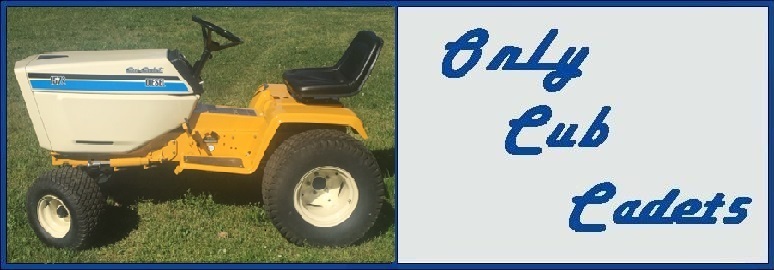
 |
PLEASE PATRONIZE OUR SPONSORS!






|
|||||||
 |
|
|
Thread Tools | Display Modes |
|
#301
|
||||
|
||||
|
The next several posts are going to really reveal my lack of experience, so help (and patience with me) is going to be appreciated.
I'm getting ready to start the engine rebuild and it's been a while since takedown, so many parts, so many new procedures. The first question is: How to tell the difference between the intake and exhaust valves. They were identified by packaging, but not anymore.  Can one tell the difference by looking at where the keepers mount? One of them has a bigger slot: 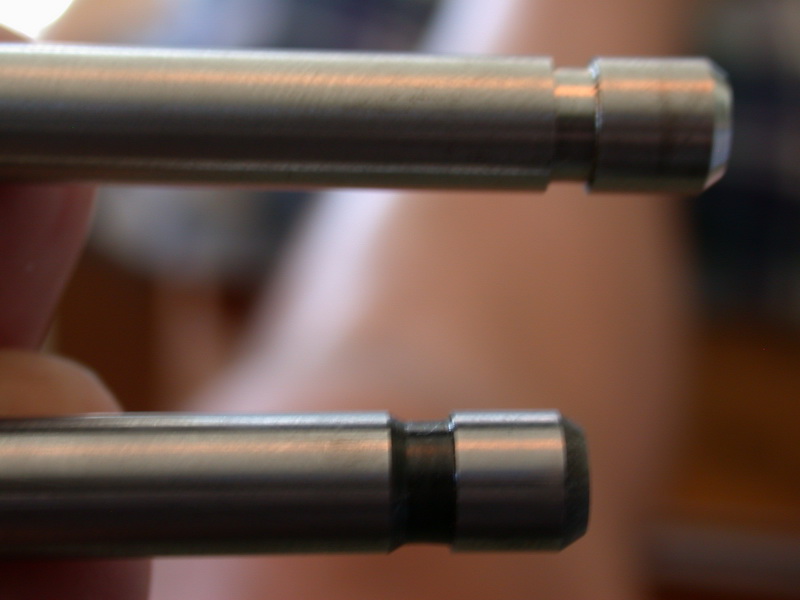
|
|
#302
|
||||
|
||||
|
Next question is about the piston and rings. This has me totally confused.
I get the part about checking gaps, but as far as which ring goes where, and how to space the gaps around the piston, I'm scratching my head. I'll do some more searching and reading, but maybe someone can point me to something. The kohler service manual isn't really helping in this regard either. I don't have any special ring installation tools. Are they necessary? |
|
#303
|
||||
|
||||
|
Quote:
Install oil control ring (bottom) 1 inch the left of expansion ring gap. Install oil control ring (top) 1 inch to the right of expansion ring gap. Lets say the oil expansion ring gap is 0 degrees, the the top ring gap would be at 120 degrees from 0 and the second ring gap would be at 240 degrees. Here is a crude drawing of what it should look like when veiwed looking down on the piston. Red lines are ring gaps. Green lines are the upper and lower oil control ring gaps.
__________________
Nemesis |
|
#304
|
||||
|
||||
|
The head of the exhaust valve will be smaller.
|
|
#305
|
||||
|
||||
|
Thanks Matt. I'll check them with the caliper.
I'm not feeling really good about this whole thing. I put my rings in the cylinder to check the gaps, and they're bigger than Kohler specs call for. Then I read where a lot of machine shops overbore to "cya" from ring seizing. And the instructions on the right-side-up thing for the rings stinks. |
|
#306
|
||||
|
||||
|
John, thanks. It's not really registering with me at the moment, but I'll print it out and look at what I have to try and make more sense of it.
What about the special ring tool thing? It doesn't look terribly hard to do it by hand. |
|
#307
|
||||
|
||||
|
The rings can be quite brittle and break easy if you man handle them. The ring expander helps to open them up and let you just slide them on easy. Also it will keep the edges of the ring at the gap end from digging into the side of the piston during assembly.
__________________
DWayne 1973: 128, ag tires, 3pt. lift, spring assist, lights, 42" Deck 10" moldboard plow 2016 XT1 42" deck 18HP |
|
#308
|
||||
|
||||
|
They've got these for $8 at Harbor Freight. I'll pick up a set.

|
|
#309
|
||||
|
||||
|
OK, here's where I'm at. I want to know if I should be concerned, and how much so.
Here's Ring "1", I've identified it as the top (or compression) ring: .  I put it in the cylinder and pushed it down about an inch using the piston: . 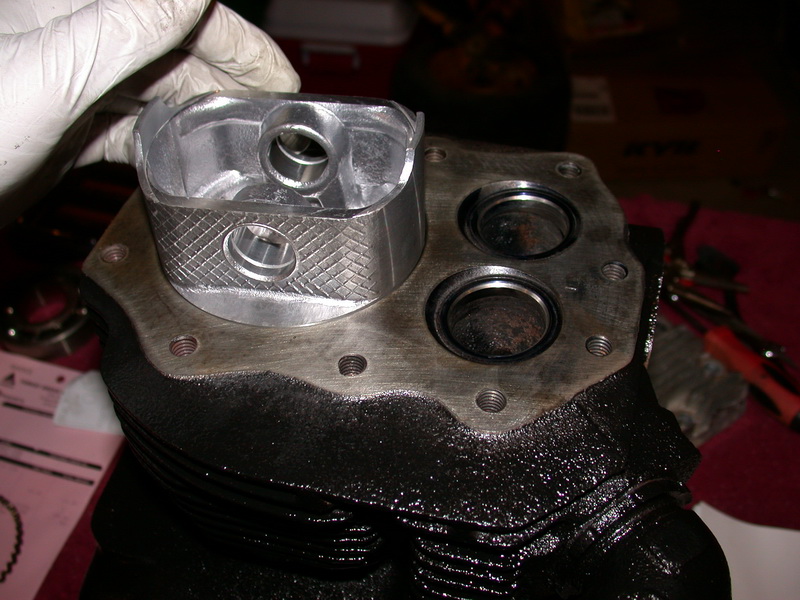 . 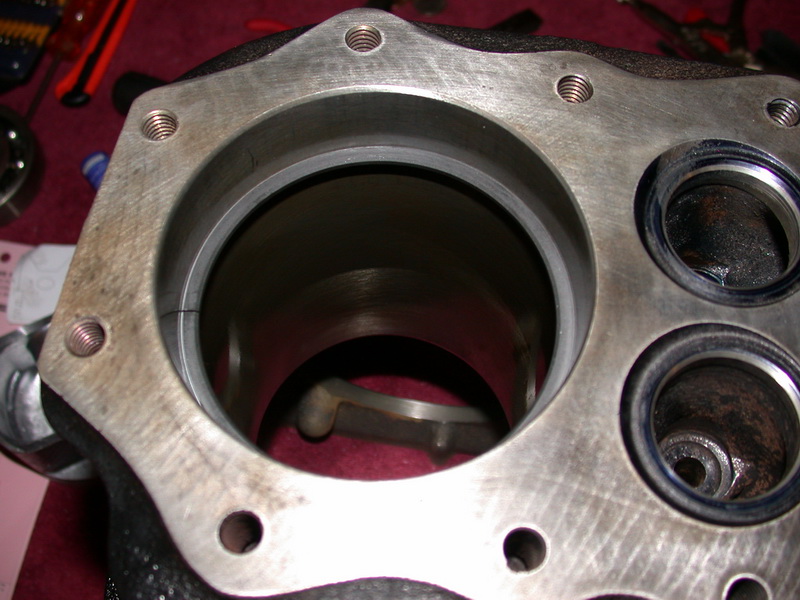 . Then I could check the gap using feeler gauges: . 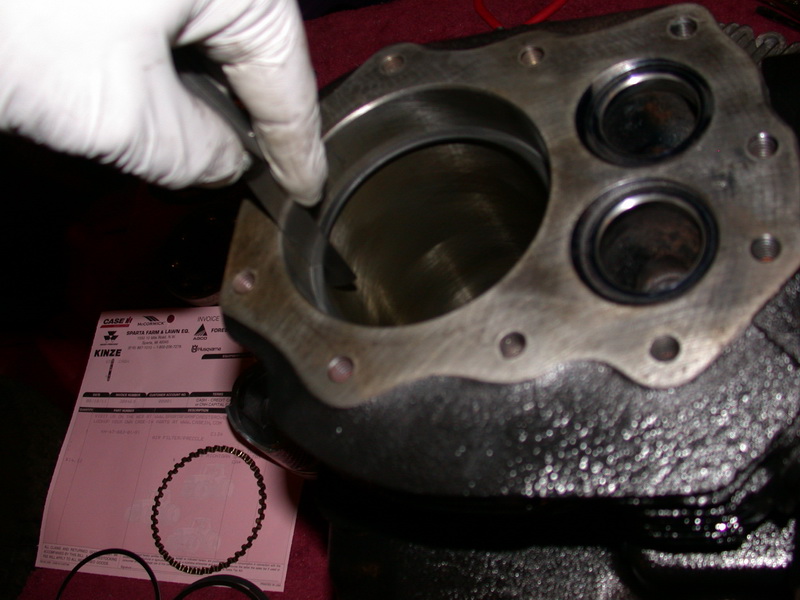 . And I'm getting about .038 to .040" of gap. The Kohler spec is .010 to .020", if I'm reading this page correctly. Here's a picture of my piston, so I'm looking at the second one down the chart: . 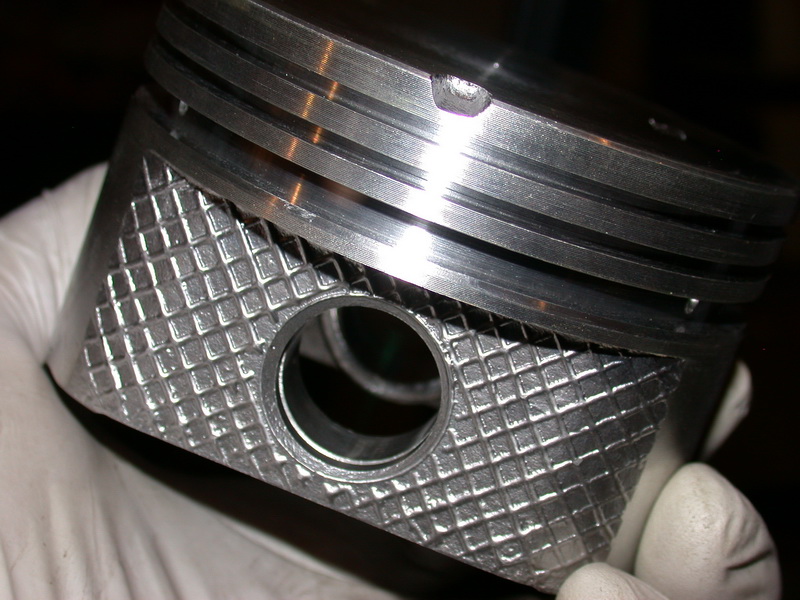 Here's Ring "2", I've identified it as the middle (oil scraper) ring: .  Using the same method, that one measures .035" of end gap: . 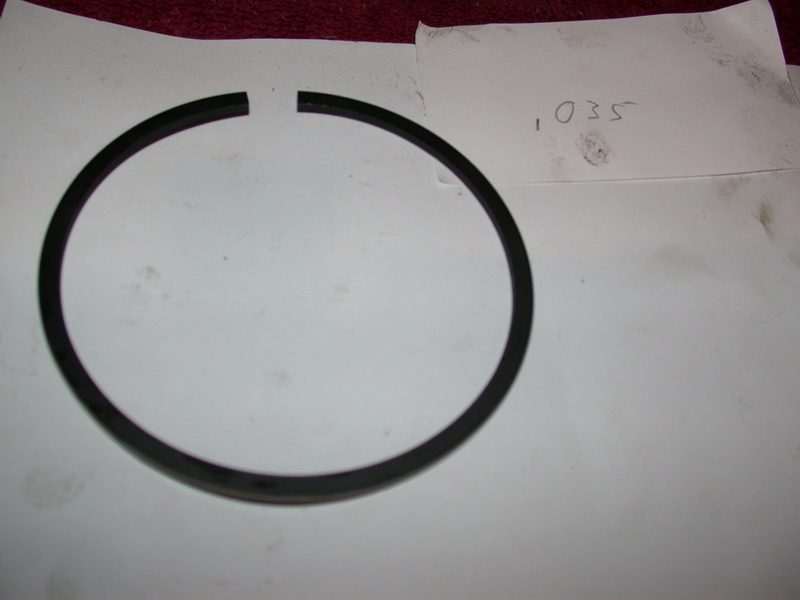 The two thinner (oil lubricating) rings measured @ .020 and .025 end gaps, and there's an expander with them. So here's the questions: 1. How much problem is this excessive gapping (I'm already thinking "bad.") 2: The machinist didn't have the new piston when he did the cylinder. Said he "didn't need it." And when I took the rebuild kit with me to pick it up, he didn't "need to" check the piston to bore because he got his job right, and so long as the parts are to spec, everything should be fine. This guy was recommended by the Cub dealer as well as a Kohler parts / repair shop. Since I can't measure the bore, how do I know whether the gap size is the fault of the bore or the rings themselves? How to proceed? |
|
#310
|
||||
|
||||
|
I can't believe he did it without having the piston and rod. My machinists measured the block and crank, told me what I needed to order, and said he could not proceed without the new parts on hand. He said he needed them to get the crank turned and block bored to match the new parts. He stated the reason was differences in manufacturing, example you order a .010 over piston, some are exactly .010 over, some have the clearance tolerances built it (say the clearance toleance is .0003-.0005, the piston could actually come in at only .0095....where another could come it at .010)...I don't know the exact measurement or clearances, just used this senario as an example. He did tell me that years ago, if you order a kohler piston, it came in at exactly the right figure according to the book, and you could risk boring it to what the book called for and had no issues, now a days, they vary in tolerances, and it is best to have it on hand before boring the block.
I would say there is a good chance the machinist may have over bored the block, but I am by no means an expert on such matters, I think I would take it back to him and show him your concerns, have him measure the parts and block for you, if he goofed up, he should stand by his work. If he chooses not to take care of the issue, get a second opinion from another shop, then I guess small claims court would be your only recourse. Good luck!
__________________
Jeff Brookfield, MO ________________ IH Red 782 with weights and sleeve hitch! IH snow blade, Brinly plow, Brinly disk, Brinly harrow, Johnson rear blade, and a #2 IH Cart |
 |
|
|
Cub Cadet is a premium line of outdoor power equipment, established in 1961 as part of International Harvester. During the 1960s, IH initiated an entirely new line of lawn and garden equipment aimed at the owners rural homes with large yards and private gardens. There were a wide variety of Cub Cadet branded and after-market attachments available; including mowers, blades, snow blowers, front loaders, plows, carts, etc. Cub Cadet advertising at that time harped on their thorough testing by "boys - acknowledged by many as the world's worst destructive force!". Cub Cadets became known for their dependability and rugged construction.
MTD Products, Inc. of Cleveland, Ohio purchased the Cub Cadet brand from International Harvester in 1981. Cub Cadet was held as a wholly owned subsidiary for many years following this acquisition, which allowed them to operate independently. Recently, MTD has taken a more aggressive role and integrated Cub Cadet into its other lines of power equipment.
This website and forum are not affiliated with or sponsored by MTD Products Inc, which owns the CUB CADET trademarks. It is not an official MTD Products Inc, website, and MTD Products Inc, is not responsible for any of its content. The official MTD Products Inc, website can be found at: http://www.mtdproducts.com. The information and opinions expressed on this website are the responsibility of the website's owner and/or it's members, and do not represent the opinions of MTD Products Inc. IH, INTERNATIONAL HARVESTER are registered trademark of CNH America LLC
All material, images, and graphics from this site are the property of www.onlycubcadets.net. Any unauthorized use, reproductions, or duplications are prohibited unless solely expressed in writing.
Cub Cadet, Cub, Cadet, IH, MTD, Parts, Tractors, Tractor, International Harvester, Lawn, Garden, Lawn Mower, Kohler, garden tractor equipment, lawn garden tractors, antique garden tractors, garden tractor, PTO, parts, online, Original, 70, 71, 72, 73, 76, SO76, 80, 81, 86, 100, 102, 104, 105, 106, 107, 108,109, 122, 123, 124, 125, 126, 127, 128, 129, 147, 149, 169, 182, 282, 382, 482, 580, 582, 582 Special, 680, 682, 782, 782D, 784, 800, 805, 882, 982, 984, 986, 1000, 1015, 1100, 1105, 1110, 1200, 1250, 1282, 1450, 1512, 1604, 1605, 1606, 1610, 1615, 1620, 1650, 1710, 1711, 1712, 1806, 1810, 1811, 1812, 1912, 1914.